WATCH: What is ideal balance?
Instruction
Clement: Laid-off or perfect fade? Across-the-line or perfect draw?

Some call the image on the left laid off, but if you are hitting a fade, this could be a perfect backswing for it! Same for across the line for a draw! Stop racking your brain with perceived mistakes and simply match backswing to shot shape!
- LIKE0
- LEGIT0
- WOW0
- LOL0
- IDHT0
- FLOP0
- OB0
- SHANK1
Instruction
The Wedge Guy: The easiest-to-learn golf basic

My golf learning began with this simple fact – if you don’t have a fundamentally sound hold on the golf club, it is practically impossible for your body to execute a fundamentally sound golf swing. I’m still a big believer that the golf swing is much easier to execute if you begin with the proper hold on the club.
As you might imagine, I come into contact with hundreds of golfers of all skill levels. And it is very rare to see a good player with a bad hold on the golf club. There are some exceptions, for sure, but they are very few and very far between, and they typically have beat so many balls with their poor grip that they’ve found a way to work around it.
The reality of biophysics is that the body moves only in certain ways – and the particulars of the way you hold the golf club can totally prevent a sound swing motion that allows the club to release properly through the impact zone. The wonderful thing is that anyone can learn how to put a fundamentally sound hold on the golf club, and you can practice it anywhere your hands are not otherwise engaged, like watching TV or just sitting and relaxing.
Whether you prefer an overlap, interlock or full-finger (not baseball!) grip on the club, the same fundamentals apply. Here are the major grip faults I see most often, in the order of the frequency:
Mis-aligned hands
By this I mean that the palms of the two hands are not parallel to each other. Too many golfers have a weak left hand and strong right, or vice versa. The easiest way to learn how to hold the club with your palms aligned properly is to grip a plain wooden ruler or yardstick. It forces the hands to align properly and shows you how that feels. If you grip and re-grip a yardstick several times, then grip a club, you’ll see that the learning curve is almost immediate.
The position of the grip in the upper/left hand
I also observe many golfers who have the butt of the grip too far into the heel pad of the upper hand (the left hand for right-handed players). It’s amazing how much easier it is to release the club through the ball if even 1/4-1/2″ of the butt is beyond the left heel pad. Try this yourself to see what I mean. Swing the club freely with just your left hand and notice the difference in its release from when you hold it at the end of the grip, versus gripping down even a half inch.
To help you really understand how this works, go to the range and hit shots with your five-iron gripped down a full inch to make the club the same length as your seven-iron. You will probably see an amazing shot shape difference, and likely not see as much distance loss as you would expect.
Too much lower (right) hand on the club
It seems like almost all golfers of 8-10 handicap or higher have the club too far into the palm of the lower hand, because that feels “good” if you are trying to control the path of the clubhead to the ball. But the golf swing is not an effort to hit at the ball – it is a swing of the club. The proper hold on the club has the grip underneath the pad at the base of the fingers. This will likely feel “weak” to you — like you cannot control the club like that. EXACTLY. You should not be trying to control the club with your lower/master hand.
Gripping too tightly
Nearly all golfers hold the club too tightly, which tenses up the forearms and prevents a proper release of the club through impact. In order for the club to move back and through properly, you must feel that the club is controlled by the last three fingers of the upper hand, and the middle two fingers of the lower hand. If you engage your thumbs and forefingers in “holding” the club, the result will almost always be a grip that is too tight. Try this for yourself. Hold the club in your upper hand only, and squeeze firmly with just the last three fingers, with the forefinger and thumb off the club entirely. You have good control, but your forearms are not tense. Then begin to squeeze down with your thumb and forefinger and observe the tensing of the entire forearm. This is the way we are made, so the key to preventing tenseness in the arms is to hold the club very lightly with the “pinchers” — the thumbs and forefingers.
So, those are what I believe are the four fundamentals of a good grip. Anyone can learn them in their home or office very quickly. There is no easier way to improve your ball striking consistency and add distance than giving more attention to the way you hold the golf club.
More from the Wedge Guy
- The Wedge Guy: Golf mastery begins with your wedge game
- The Wedge Guy: Why golf is 20 times harder than brain surgery
- The Wedge Guy: Musings on the golf ball rollback
- LIKE88
- LEGIT15
- WOW6
- LOL1
- IDHT0
- FLOP4
- OB1
- SHANK8
Instruction
Clement: Stop ripping off your swing with this drill!

Not the dreaded headcover under the armpit drill! As if your body is defective and can’t function by itself! Have you seen how incredible the human machine is with all the incredible feats of agility all kinds of athletes are accomplishing? You think your body is so defective (the good Lord is laughing his head off at you) that it needs a headcover tucked under the armpit so you can swing like T-Rex?
- LIKE0
- LEGIT3
- WOW2
- LOL0
- IDHT0
- FLOP0
- OB0
- SHANK2
-

 19th Hole3 weeks ago
19th Hole3 weeks agoJustin Thomas on the equipment choice of Scottie Scheffler that he thinks is ‘weird’
-

 19th Hole3 weeks ago
19th Hole3 weeks ago‘Absolutely crazy’ – Major champ lays into Patrick Cantlay over his decision on final hole of RBC Heritage
-
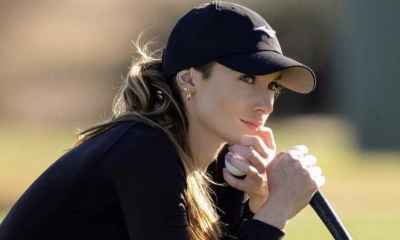
 19th Hole2 weeks ago
19th Hole2 weeks agoLET pro gives detailed financial breakdown of first week on tour…and the net result may shock you
-

 19th Hole2 days ago
19th Hole2 days agoReport: LIV star turns down PGA Championship invite due to ‘personal commitments’
-
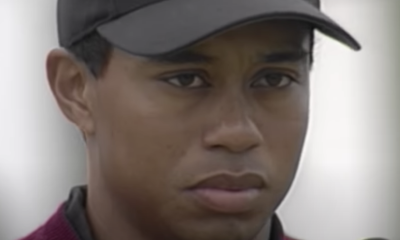
 19th Hole1 week ago
19th Hole1 week agoGary Player claims this is what ‘completely ruined’ Tiger Woods’ career
-
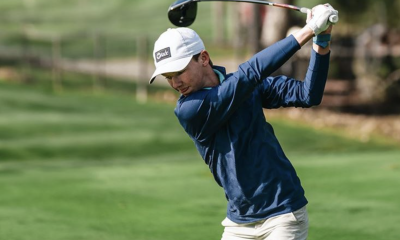
 19th Hole3 weeks ago
19th Hole3 weeks agoTaylorMade signs 15-year-old AJGA Rolex Junior Player of the Year to an NIL contract
-
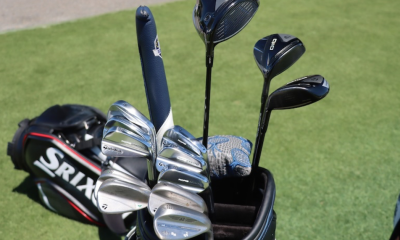
 Whats in the Bag2 weeks ago
Whats in the Bag2 weeks agoTeam McIlowry (Rory McIlroy, Shane Lowry) winning WITBs: 2024 Zurich Classic
-
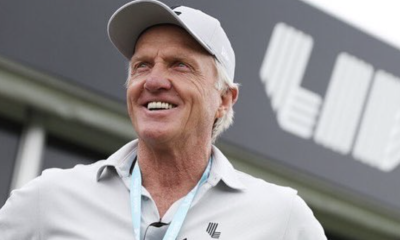
 Equipment1 week ago
Equipment1 week agoGolf fans left surprised by LIV’s choice of course for its 2024 individual championship event



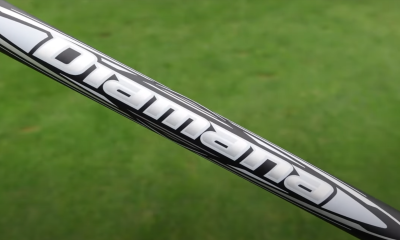

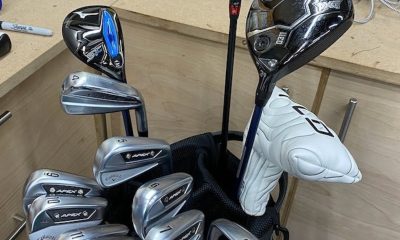





Doug Kercher PGA Pro Australia
Jan 8, 2019 at 5:59 am
Plenty of know all commenting. If you saw Martin’s pure ball striking you would want what he has. Well done keyboard warriors.
Gunter Eisenberg
Jan 2, 2019 at 9:23 am
Martin Ayers!?!? Automatic thumbs down.
Ed LeBeau
Dec 31, 2018 at 2:14 pm
Unnecessarily complicated.
Sole the club on the ground with the arms hanging and the weight the same in each foot with it just behind the balls of the feet.
Maintain that weight distribution in the feet till impact.
Thats balance.
Web
Dec 31, 2018 at 2:30 pm
Ed, you should talk with PGA Pro and teacher Bobby Greenwood in TN about balance and footwork. He is amazingly knowledgeable and experienced.
Web
Dec 31, 2018 at 11:25 am
I could watch Snead swing all day long.
George
Dec 31, 2018 at 5:57 am
Let’s see. Did Sam Snead in this video hit up on a teed ball? Did Bobby Jones? Did Jordan Speith? What clubs were they using? 460cc? So maybe JS’s upper body hangs back, because he wants to improve launch conditions? Or maybe it’s just a swing “fault” he developed to counter his chicken wings etc. etc.
Oh, another thing. Maybe don’t use the phrase “flat to the earth” when you don’t mean parallel to the ground. JM2C
geohogan
Jan 8, 2019 at 4:41 pm
@George
Neither did Jack Nicklaus or Ben Hogan hit up on a teed ball.
Not flash in the pan, Just the best ball strikers we have ever known.
One swing for all full shots,
if we want higher launch, simply use a higher loft on the driver…
https://tenor.com/view/homer-simpson-les-simpson-matt-groening-ouff-non-gif-12807779
wilbur
Dec 31, 2018 at 12:51 am
Ideal balance is determined using force plate technology underfoot. It tells you where the pressures are under your feet and where the pressure point from your body moves throughout the swing… otherwise it’s just a bunch of nebulous words.
geohogan
Jan 2, 2019 at 9:10 pm
@wilbur, ideal balance is determined by billions of neurons in our subconscious, without a conscious thought.
How nebulous to think we would need force plate technology for proper balance. Imagining how much better the balance of Sam Snead if he only had force plate technology. LOL
Good laugh to start a new year.
.
Dan Black
Dec 30, 2018 at 8:17 am
Every golfer that’s ever been worth a lick has anywhere from 35-43 degrees of forward bend/lean/tilt from the waist. I understand your concept but saying golfers do not lean forward is misleading and untrue. Nice video though.
Ian
Dec 30, 2018 at 7:08 am
What did I just watch? This is more misleading than helpful. Were you trying to say you have to tilt (not lean over) to hit the ball (Balance is achieved by pushing out the rear end to counter the tilt of the torso)?
geohogan
Dec 29, 2018 at 10:35 am
The human species would not have survived or evolved without an automatic balance system to keep us upright. It happens subconsciously.
Our head and hips counter balance in the coronal plane, so of course our knees move to balance both sides of our torso. As we move the mass of our arms(about 30-40 pounds) from one side of your torso to the other, our subconscious knows automatically, to preprogram movement of hundreds of muscles to balance that movement of mass.
Our balance mechanisms work exactly as they did for Sam Snead and Bobby Jones… subconsciously. Any attempt to control our balance with conscious movement of individual body parts is as ludicrous as trying to learn golf swing, one body part at a time.
Will
Dec 28, 2018 at 4:56 pm
Snead reminds me of Cameron Champ.
geohogan
Jan 10, 2019 at 7:41 pm
@will, and reminds me of Ben Hogan
All three drop into the slot and torso rotation brings the clubface to impact from the inside with little to no manipulation with the hands ….so much more consistent and less timing dependent, as taught by Monte and the like.
Zek
Dec 28, 2018 at 4:54 pm
Talk with Bobby Greenwood, former PGA golfer and TN Hall of Famer about his teachings of balance and footwork.